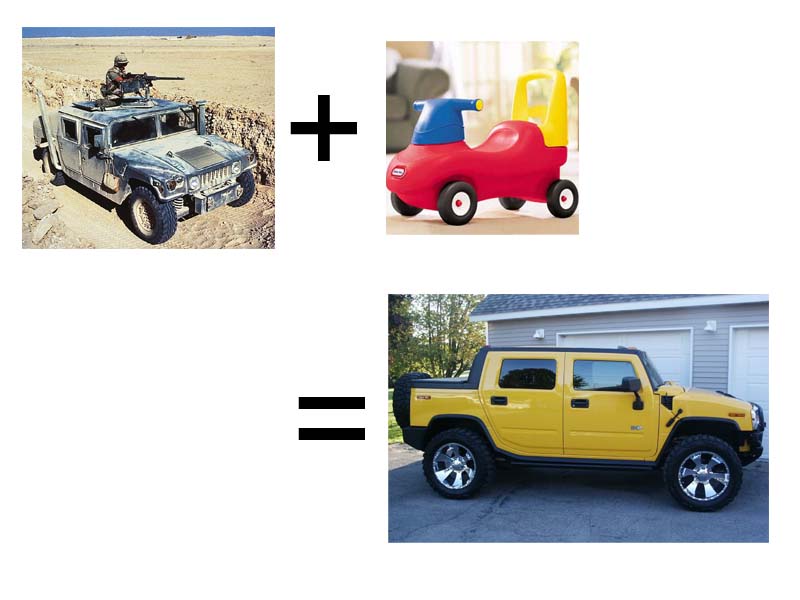Hybrid Concept Cars, The Future Is Now Part 2
So yesterday our cars of the future article was on "Didn't they do this already". I think today's category is "Wouldn't be Caught Dead in This". You can try to persuade me that people buy cars based on power and performance all you want but I am pretty sure that the look and style of the car is pretty important, too. Just like no one will ever want to be seen in the environmentally friendly Hummer, I can imagine the same will be said of most of these vehicles.
In third place we have the Ford Mercury Meta One.
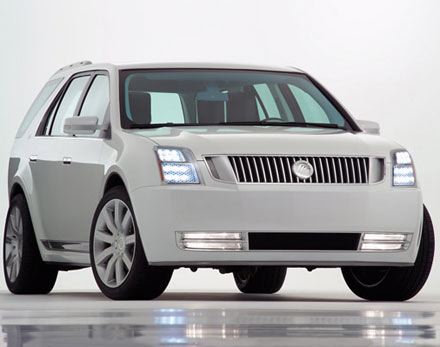 You may argue that this car isn't necessarily the ugliest car you have ever seen, in fact it's okay. Work with me here for a minute, if you please. Think back to that movie about the cars that try to kill people. You know the one, the really bad Stephen King movie, Maximum Overdrive? This car will eat you. And your children. And then your neighbors and their families until it runs out of gas, which will take a little longer than a normal SUV since this runs on nice and clean " hybrid transmission with a twin-turbocharged V-6 diesel engine calibrated to run on a bio-diesel blend". You can see how I feel this is potentially hazardous to everyone, right? Just look into those headlight "eyes". Those are the headlights of a killer.
Second Place in the ugly stick contest goes to the Volvo 3CC:
You may argue that this car isn't necessarily the ugliest car you have ever seen, in fact it's okay. Work with me here for a minute, if you please. Think back to that movie about the cars that try to kill people. You know the one, the really bad Stephen King movie, Maximum Overdrive? This car will eat you. And your children. And then your neighbors and their families until it runs out of gas, which will take a little longer than a normal SUV since this runs on nice and clean " hybrid transmission with a twin-turbocharged V-6 diesel engine calibrated to run on a bio-diesel blend". You can see how I feel this is potentially hazardous to everyone, right? Just look into those headlight "eyes". Those are the headlights of a killer.
Second Place in the ugly stick contest goes to the Volvo 3CC:
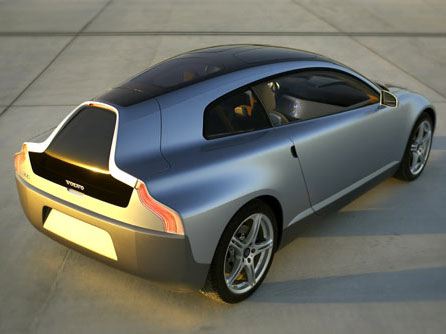 This vehicle is kind of ugly. I mean, it's nice and aerodynamic and boasts that it can run on any type of power system (gas, ethanol, hybrid or electric). But, it looks kind of...lame. Like the vision of the future that they had in the seventies where the high fashion of the times happens to be tunics and tennis skirts. And it only sits three people and quite uncomfortably, if you really look at it. And it also takes 10,000 lithium-ion batteries (like the ones in your lap top) to power. Only 10,000? That's nothing.
First place goes hands down to the Nissan Pivo for obvious reasons:
This vehicle is kind of ugly. I mean, it's nice and aerodynamic and boasts that it can run on any type of power system (gas, ethanol, hybrid or electric). But, it looks kind of...lame. Like the vision of the future that they had in the seventies where the high fashion of the times happens to be tunics and tennis skirts. And it only sits three people and quite uncomfortably, if you really look at it. And it also takes 10,000 lithium-ion batteries (like the ones in your lap top) to power. Only 10,000? That's nothing.
First place goes hands down to the Nissan Pivo for obvious reasons:
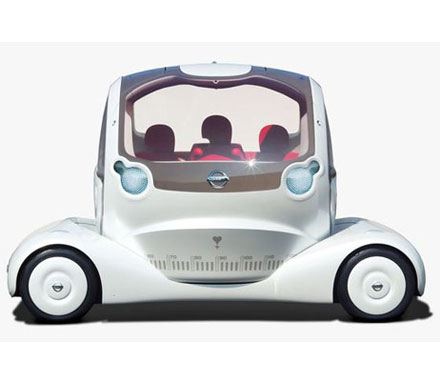 It's electric and it swivels. Enough said.
Eventually I will get around to posting the best of these concept cars. Thanks for reading!
It's electric and it swivels. Enough said.
Eventually I will get around to posting the best of these concept cars. Thanks for reading!
 You may argue that this car isn't necessarily the ugliest car you have ever seen, in fact it's okay. Work with me here for a minute, if you please. Think back to that movie about the cars that try to kill people. You know the one, the really bad Stephen King movie, Maximum Overdrive? This car will eat you. And your children. And then your neighbors and their families until it runs out of gas, which will take a little longer than a normal SUV since this runs on nice and clean " hybrid transmission with a twin-turbocharged V-6 diesel engine calibrated to run on a bio-diesel blend". You can see how I feel this is potentially hazardous to everyone, right? Just look into those headlight "eyes". Those are the headlights of a killer.
Second Place in the ugly stick contest goes to the Volvo 3CC:
You may argue that this car isn't necessarily the ugliest car you have ever seen, in fact it's okay. Work with me here for a minute, if you please. Think back to that movie about the cars that try to kill people. You know the one, the really bad Stephen King movie, Maximum Overdrive? This car will eat you. And your children. And then your neighbors and their families until it runs out of gas, which will take a little longer than a normal SUV since this runs on nice and clean " hybrid transmission with a twin-turbocharged V-6 diesel engine calibrated to run on a bio-diesel blend". You can see how I feel this is potentially hazardous to everyone, right? Just look into those headlight "eyes". Those are the headlights of a killer.
Second Place in the ugly stick contest goes to the Volvo 3CC:
 This vehicle is kind of ugly. I mean, it's nice and aerodynamic and boasts that it can run on any type of power system (gas, ethanol, hybrid or electric). But, it looks kind of...lame. Like the vision of the future that they had in the seventies where the high fashion of the times happens to be tunics and tennis skirts. And it only sits three people and quite uncomfortably, if you really look at it. And it also takes 10,000 lithium-ion batteries (like the ones in your lap top) to power. Only 10,000? That's nothing.
First place goes hands down to the Nissan Pivo for obvious reasons:
This vehicle is kind of ugly. I mean, it's nice and aerodynamic and boasts that it can run on any type of power system (gas, ethanol, hybrid or electric). But, it looks kind of...lame. Like the vision of the future that they had in the seventies where the high fashion of the times happens to be tunics and tennis skirts. And it only sits three people and quite uncomfortably, if you really look at it. And it also takes 10,000 lithium-ion batteries (like the ones in your lap top) to power. Only 10,000? That's nothing.
First place goes hands down to the Nissan Pivo for obvious reasons:
 It's electric and it swivels. Enough said.
Eventually I will get around to posting the best of these concept cars. Thanks for reading!
It's electric and it swivels. Enough said.
Eventually I will get around to posting the best of these concept cars. Thanks for reading!
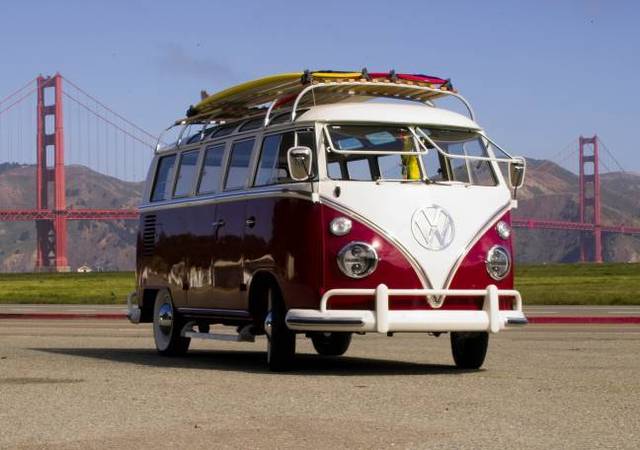 Ladies and gentlemen, I would like to introduce to you the 2010 VW Microbus, um I mean Chameleon. So, yeah, apparently the late 60's are back and we are all going to be peace loving pot smoking patchouli smelling hippies. At least we have the perfect vehicle for it, I mean this "new" vehicle is all electricity powered with 10 count them 10 30v batteries in the floor to power the vehicle. Oh, the surf boards are thrown in free of charge, they are fitted with solar panels for recharging the batteries. This is the vehicle for those fifty somethings to relive their youth in a perfectly environmentally friendly manner.
Second place in the "Didn't we already do this" catagory is BMW X3:
Ladies and gentlemen, I would like to introduce to you the 2010 VW Microbus, um I mean Chameleon. So, yeah, apparently the late 60's are back and we are all going to be peace loving pot smoking patchouli smelling hippies. At least we have the perfect vehicle for it, I mean this "new" vehicle is all electricity powered with 10 count them 10 30v batteries in the floor to power the vehicle. Oh, the surf boards are thrown in free of charge, they are fitted with solar panels for recharging the batteries. This is the vehicle for those fifty somethings to relive their youth in a perfectly environmentally friendly manner.
Second place in the "Didn't we already do this" catagory is BMW X3:

 You know, they say that if you never change in business, you are insane. Well, BMW didn't listen. This car looks neither futuristic nor retro, meaning it just looks kind of now. It's not even trying very hard to be environmentally friendly. Instead of using a battery it incorporates a superconductor, which provides energy in short bursts. It gets an "A" for effort but nothing else. This concept car is only getting about 20% better millage than most of the cars that BMW currently produces (none of which are hybrids). This is a poor contending mom-mobile in the concept car to the future race.
Third Place in this category is the GM Sequel.
You know, they say that if you never change in business, you are insane. Well, BMW didn't listen. This car looks neither futuristic nor retro, meaning it just looks kind of now. It's not even trying very hard to be environmentally friendly. Instead of using a battery it incorporates a superconductor, which provides energy in short bursts. It gets an "A" for effort but nothing else. This concept car is only getting about 20% better millage than most of the cars that BMW currently produces (none of which are hybrids). This is a poor contending mom-mobile in the concept car to the future race.
Third Place in this category is the GM Sequel.
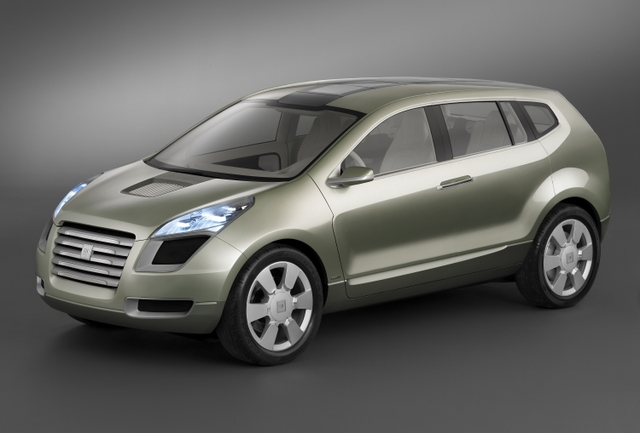 What is cool about this vehicle is that it runs on a hydrogen fuel cell and the fact that most of this car's engine components are located underneath the car and not under the hood. It does make for a roomier car but the looks are just kind of standard, this car does not make me think that I am living in the 21st century at all.Â
What is cool about this vehicle is that it runs on a hydrogen fuel cell and the fact that most of this car's engine components are located underneath the car and not under the hood. It does make for a roomier car but the looks are just kind of standard, this car does not make me think that I am living in the 21st century at all. 